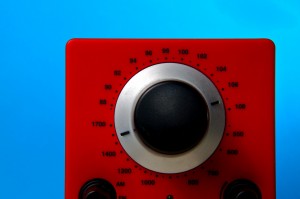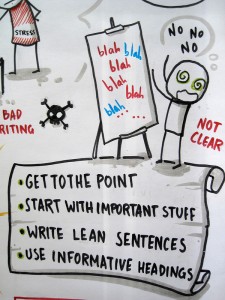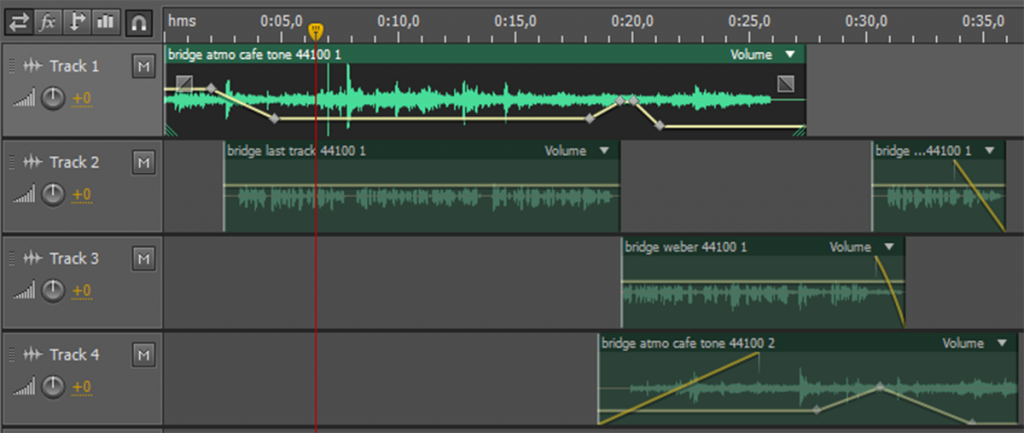Taking your radio features to the next level (part 1)
Radio journalists who regularly produce features can get stuck in a rut or develop bad habits. After a while, their work can start sounding a little formulaic. In this two-part post, radio producer and trainer Kyle James offers advice on putting a bit of zing back in your features and taking your audio packages one step further.
All of us radio reporters with a few notches on our belts have been there: we’ve recorded our interviews, have some natural or ambient sound, and have written up a great-looking script. But then when we edit the audio all together and give it a listen, the final result is kind of dull.
I mean, the story might be fine in that it’s got all the necessary components. But maybe it sounds just like the last five features you’ve done, and the five before that – only the topic has changed.
One common reason for this is that we often follow a pattern that we learned in our early days of producing radio features, which goes something like this – we introduce the report with some ambient sound, then we talk a bit and introduce a voice clip, have the voice clip, talk a bit more, another voice clip, and on and on in that way until four to six minutes have elapsed and we sign off. Sure, our listeners might know more about the issue but we haven’t bowled them over. Maybe we’re even yawning ourselves.
So what can we do to get professional sounding pieces that really engage the listener? One thing is to break those patterns we’ve fallen into. The goal – jump out of that rut and make sure our listeners never know quite what to expect.
Keep surprising them and they’ll likely keep tuning in.
Master the fundamentals
But before we talk about the surprises, I want to go over a few of the basic practices that have to become second nature before you head to true greatness.
Just like Picasso, who mastered the accepted academic techniques before breaking the rules and becoming a groundbreaking artist, we radio producers need to make sure our skills foundation is solid.
Then we can start playing around. (Who knows, maybe a future Picasso of the audio world is reading this.)
Keep the language clear, concise and conversational
Many reporters (and not just beginners) think writing a radio piece is like writing a print article and then throwing in some recorded quotes. Nope. We’re writing for the ear, not the eye. The ear can’t take in as much information as the eye can. And on the radio, you can’t press rewind. If a listener gets stuck thinking about an unfamiliar word or figuring out a complex sentence, she’s likely missing the next information you’re presenting. Soon, she’s lost the plot.
Here’s an example. Why write like this?
At a tumultuous meeting on Thursday, members of the University of California board of regents, in an 8-9 vote, decided to drop race-based admissions starting in the 2014 academic year, although minutes later a group of vociferous demonstrators drove the panel from the meeting room.
Does anyone talk that way? This might be OK for print but it’s too much information for the ear to process. Simplify and split it up.
This is much better:
University of California Board directors narrowly voted tonight to end race-based preferences in school admissions. Minutes later, shouting protesters drove the directors from the meeting room.
It’s simpler and shorter; the sentences are less complicated. While it leaves out some details, it focuses on the most essential information. Bottom line—radio writing has to be tight and clear and above all, interesting.
Grab listeners’ attention from the start
People are busy these days and there’s a lot of opportunity for distraction. If they’re not taken with your piece right away, a quick turn of the dial or a screen swipe will lead them to something else. So, you’ve probably got no more than 10-15 seconds to make your story grab their attention.
Starting off your feature with a minute-long, complex explanation of the issue is usually not a winning strategy. Instead, get listeners into the story right away by using clever language and interesting sound – something that will prick up their ears.
One of my editors said I should definitely get the first voice clip within 15 seconds. That seems a little extreme but the point is not to leave your listeners waiting too long for something to happen.
For this story on people who hate working in the morning in Denmark, I tried to keep the language light and entertaining and I put in a sound effect, although one that was related to the story. If any of my listeners were asleep, they probably weren’t dozing after ten seconds into the piece. Then I put in my first voice clip…a lively one.
Smooth it out with a sound bed
Grabbing as much natural sound as you can is a must for a compelling radio feature. We want to paint pictures in people’s minds through sound, with words helping out along the way.
In the many radio workshops I’ve taught, I always stress the importance of introducing your sound (such as a demonstration, rushing water, crying children, you name it), letting it hang around for a few seconds, and then fading it under the next bit of narration or clip. Don’t just plop the sound in, run it for a few moments, then cut it out completely before the next element. That’s jarring.
Instead, fade the sound down, but not completely out, before the next element begins. Then let it run for a while, fading it out when you feel the time is right.
Most people get this, but there’s a more nuanced way to deal with sound that will make your features sound smoother and much more professional.
Often when you’re recording an interview, you’re not in a studio-silent environment. Maybe there’s construction going on outside or you’re at a demonstration. In fact, you might even want a little sound behind your voice clip. It shows the listener you were there and brings them closer to the event.
But, introducing a voice clip with background noise after narration done in a studio or quiet environment can, again, be jarring. Here’s an example from a feature in which of my interviews was done in a café.
At around 17 second, the voice clips starts and all of the sudden you can hear the noise of the café behind him. While this is not a fatal flaw, it doesn’t sound good.
There is a solution that you should always do. Put down a “sound bed” that features the background noise before the voice clip starts. You fade up the sound under your voice track before the voice clip so it blends smoothly with the sound that was under the interview. You the keep the sound bed running a bit after the clip ends, then fade it out. Again, the goal is a smooth transition.
In this example, I recorded sound of the café, (sometimes called ‘room tone’) after the interview. So I had the clinking of glasses and murmuring of the customers without my interviewee talking. Then, I used that to introduce a scene, tell people I was in a café, and then kept the sound going under my narration until the voice clip started. This made the transition between my narration and the voice clip with the background noise much smoother. I reintroduced the room tone toward the end of the voice clip and kept it running after it ended so the transition from clip to the next narration was also smooth.
On my audio editor, it looked like this:
And it sounded like this:
Better, huh? These sound beds might not seem that big a deal but they separate the pros from the amateurs.
And next week, don’t forget to check out part II of “Taking Your Radio Features to the Next Level” where I’ll look at getting creative with voice clips and a few other things you can do to make your audio features stand out from the pack.
Written by Kyle James, edited by Kate Hairsine








